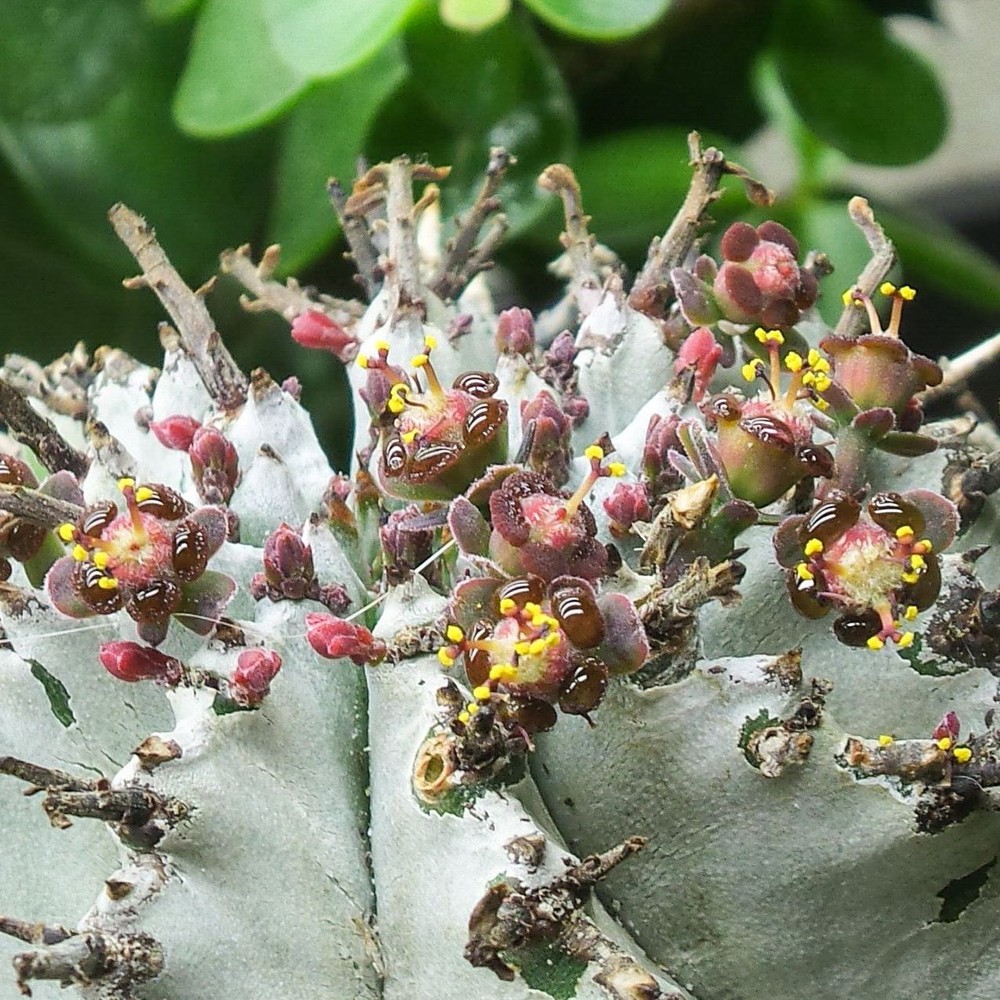African milk barrel
(Euphorbia polygona horrida)

Description
Euphorbia horrida, the African milk barrel, is a species of flowering plant in the family Euphorbiaceae, native to South Africa. It is a cactus-like shrub showing remarkable similarities to the true cacti of the New World, and thus an example of convergent evolution. Growing to 1.5 m (4 ft 11 in), it has blue-green, heavily ridged spiny stems carrying solitary green flowers in summer. In temperate regions it must be grown in heated conditions under glass. It develops new shoots laterally at the base of the plant (offset)s, often forming roots and thus a successful means of propagation. The Latin specific epithet horrida means "with many prickles" This plant has gained the Royal Horticultural Society's Award of Garden Merit. The plants are annual, biennial or perennial herbs, woody shrubs, or trees with a caustic, poisonous milky latex. The roots are fine or thick and fleshy or tuberous. Many species are more or less succulent, thorny, or unarmed. The main stem and mostly also the side arms of the succulent species are thick and fleshy, 15–91 cm (6–36 in) tall. The deciduous leaves may be opposite, alternate, or in whorls. In succulent species, the leaves are mostly small and short-lived. The stipules are mostly small, partly transformed into spines or glands, or missing. In Euphorbia, flowers occur in a head, called the cyathium (plural cyathia). Each male or female flower in the cyathium head has only its essential sexual part, in males the stamen, and in females the pistil. The flowers do not have sepals, petals, or nectar to attract pollinators, although other nonflower parts of the plant have an appearance and nectar glands with similar roles. Euphorbias are the only plants known to have this kind of flower head. Nectar glands and nectar that attract pollinators are held in the involucre, a cup-like part below and supporting the cyathium head. The "involucre" in the genus Euphorbia is not to be confused with the "involucre" in family Asteraceae members, which is a collection of bracts called phyllaries, which surround and encase the unopened flower head, then support the receptacle under it after the flower head opens.
Taxonomic tree:







